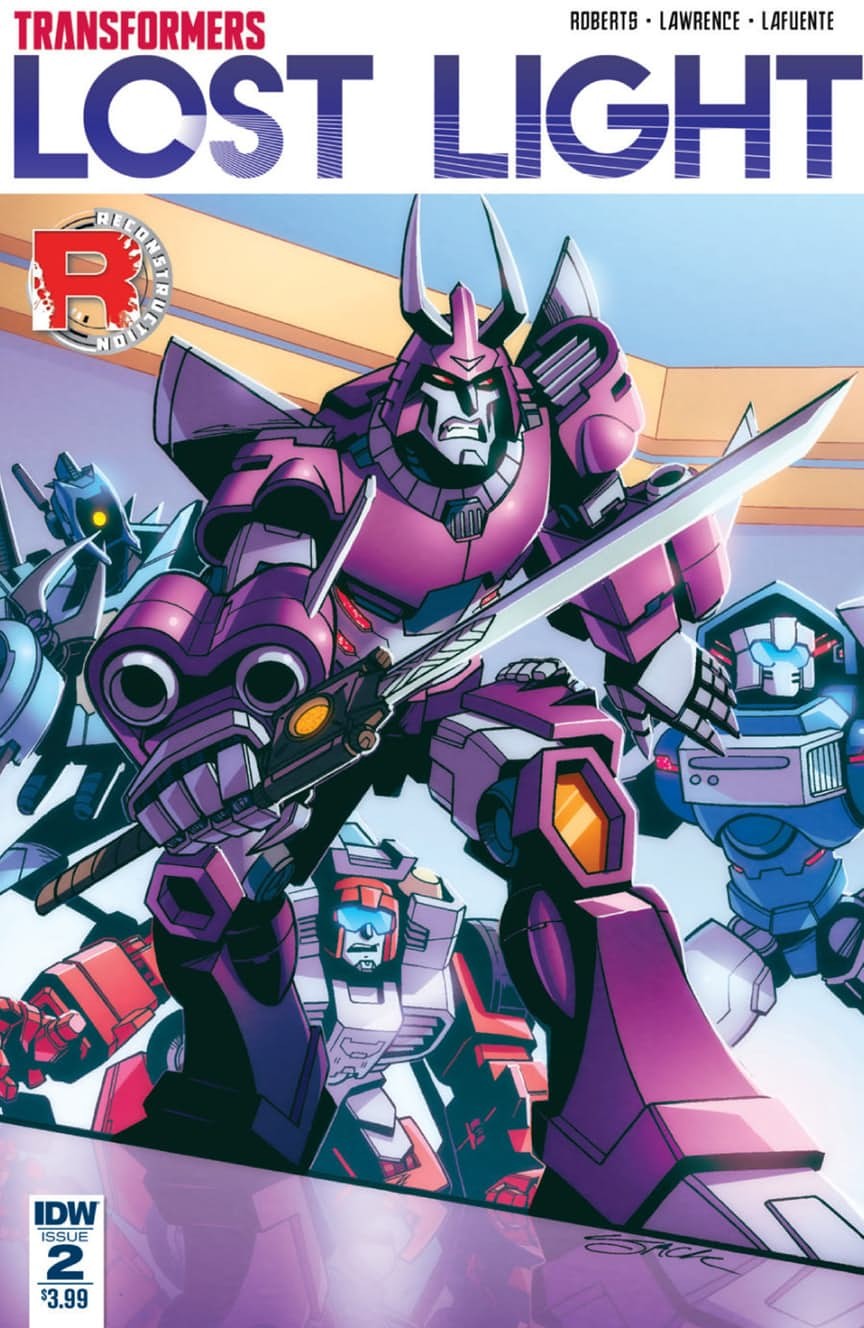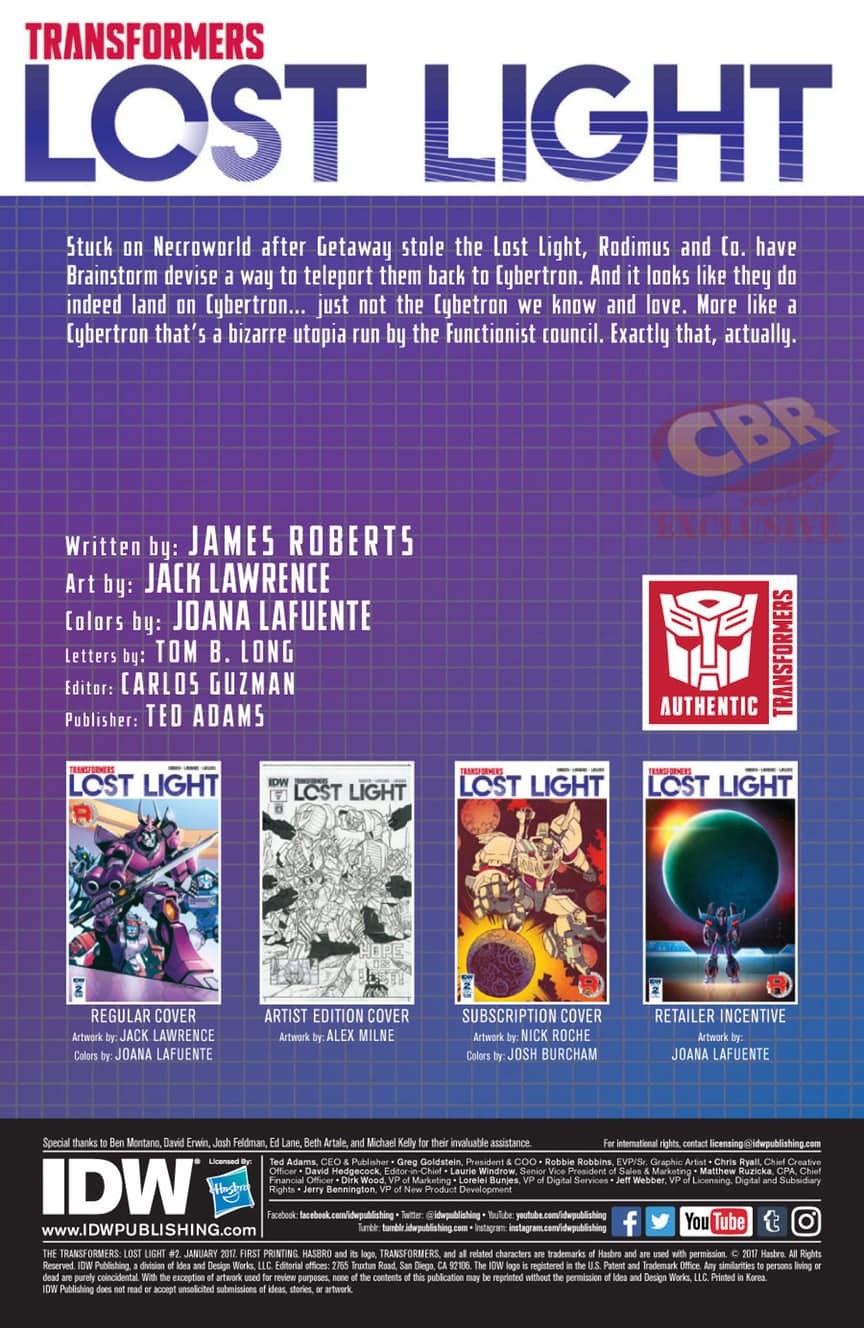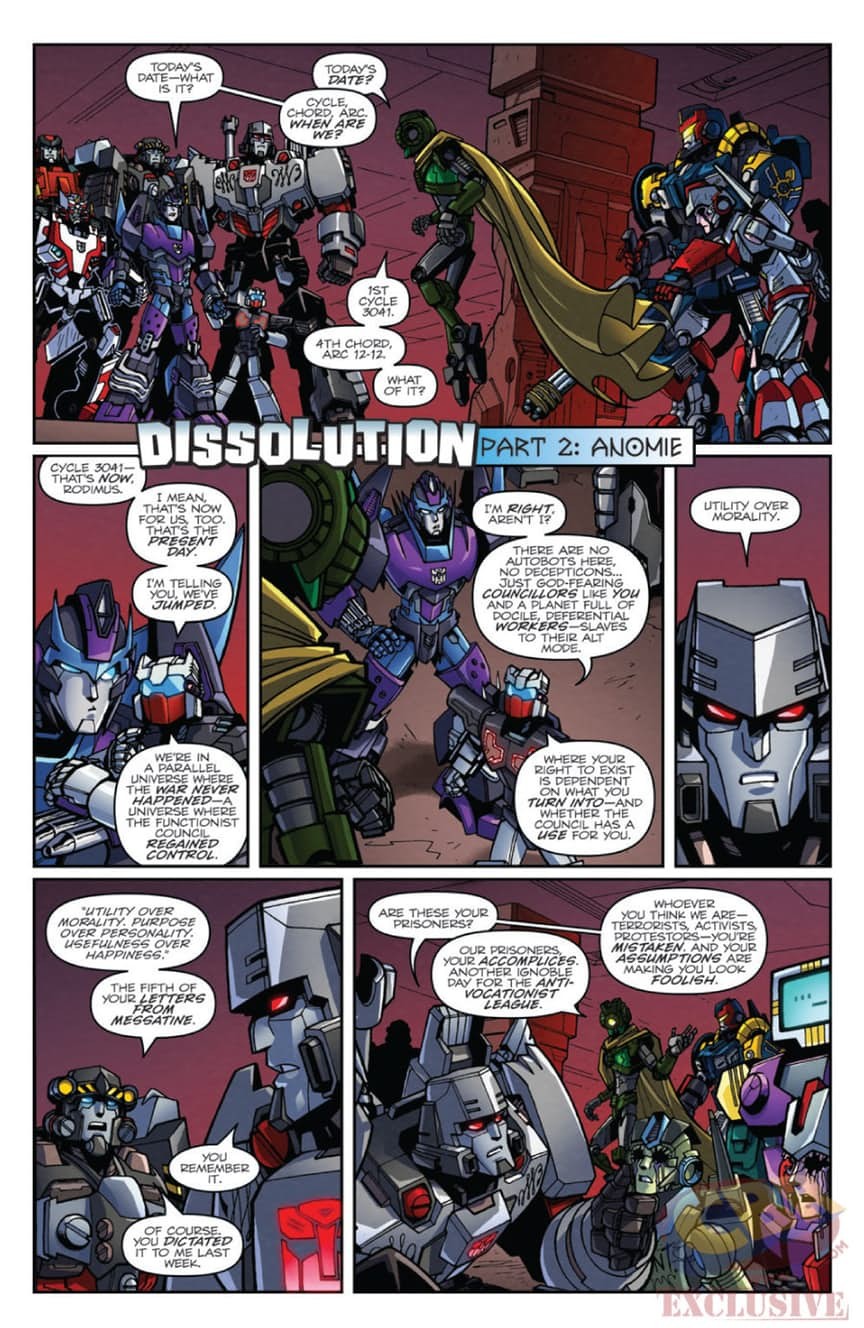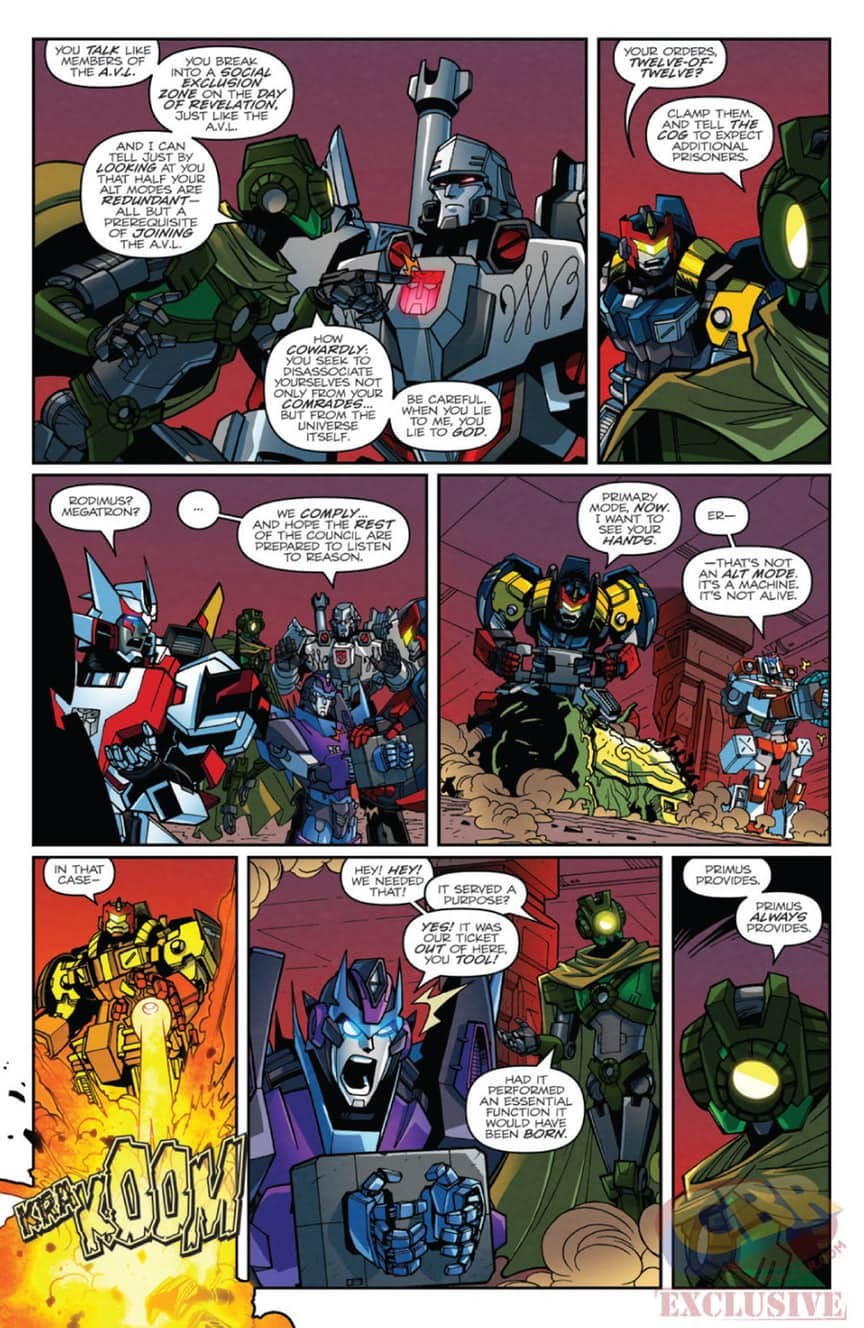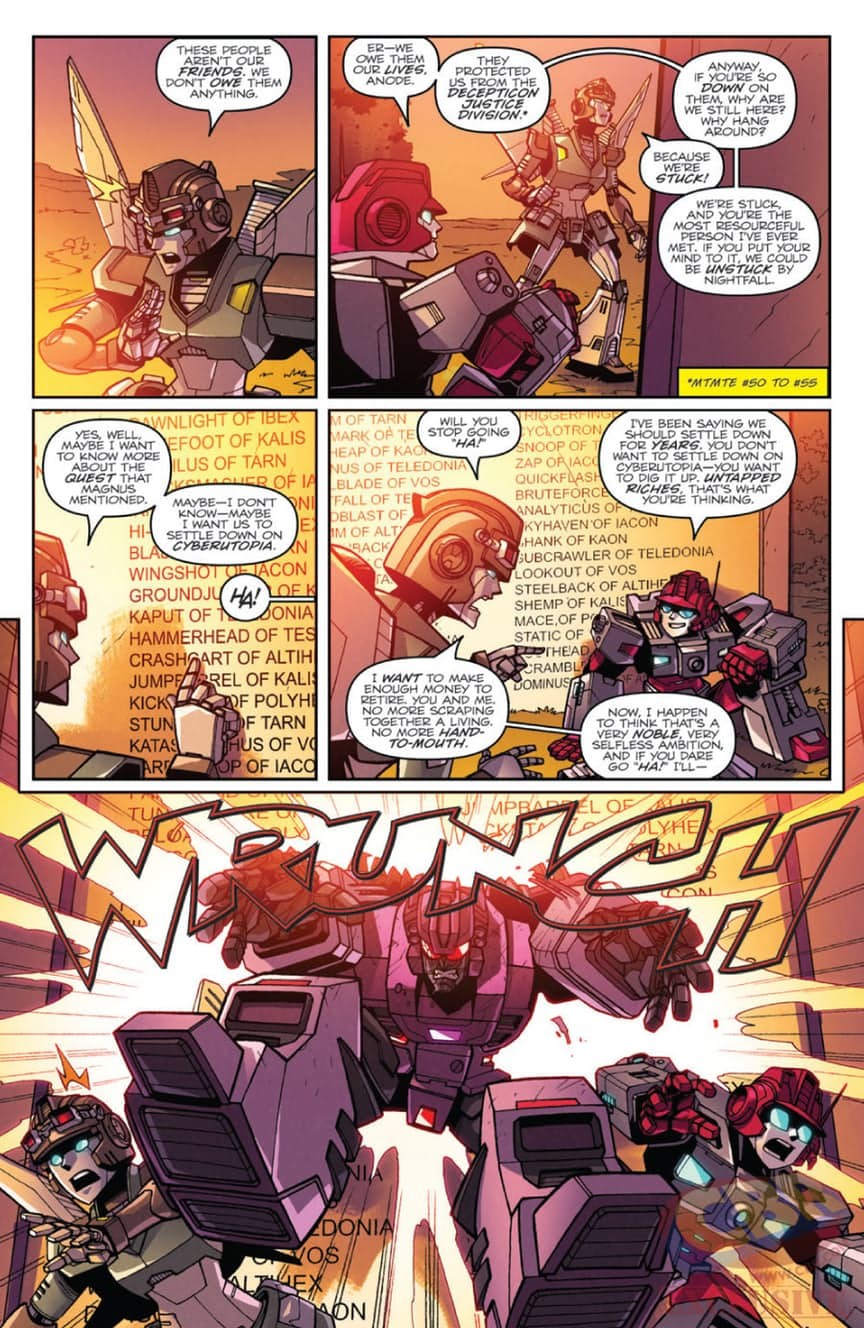You can read the whole list by going to the above link, and we have quoted part of the list below for you to read. Let us know what you think in the comments section below!
Transformers sometimes get a bad rap, but historically, the breeding ground for great storytelling in the world of Autobots and Decepticons has been in comic books. Bob Budiansky and Simon Furman conceived the lion’s share of what have become the basic cornerstones of the Transformers universe through Marvel’s Transformers comic in the ’80s and ’90s.
The current Transformers comics are produced by IDW, and while every series they’re currently producing is at the very least good, there’s one that stands head and shoulders above the rest: James Roberts’ Transformers: Lost Light.
Originally titled More Than Meets The Eye, the recently rebranded series tells the story of a ragtag group of post-war Cybertronians ostensibly on a mission to find the mythic Knights of Cybertron. That’s not what the book is really about though; it’s a story of freedom, redemption, romance, and family. It is equal parts hilarious and terrifying. It’s the best fiction ever associated with the franchise, and it’s not even a close race.
.....
13. DEVELOPMENT OF D-LIST CHARACTERS INTO FAN FAVORITES
Remember when you were a kid, desperately scouring Toys ‘R’ Us for the newest Grimlock or Starscream figures only to find shelves overflowing with the mediocre toy of some character you’d never heard of? The affectionate term coined for such toys is “pegwarmers.” The Lost Light is practically overflowing with pegwarmers.
Part of Roberts’ genius early on was making a conscious decision not to lean too heavily on the established icons of the Transformers mythos. A lot of those characters are compelling, but they have decades worth of storytelling baggage and expectations. Taking obscure, little-loved characters that had largely been ignored by the pre-existing fiction and grafting complex, surprising personalities onto them provided the crew of the Lost Light with a genuine breath of fresh air.
There’s Tailgate, a diminutive, endlessly enthusiastic Autobot who accidentally slept through the entire war; Brainstorm, an absolute genius inventor who is just a bit too amoral to be wearing that Autobot insignia; and Skids, a highly skilled theoretician with some alarming holes in his memory. It’s a sprawling, eclectic cast, though a few characters definitely stand out from the rest…
.....
7. THE SCAVENGERS
Imagine you’re a soldier in a universe spanning war that’s been going on for millions of years. You’re not a good soldier; there’s a decent chance you’re among the very worst. You’re in such a remote part of the universe that when the war ends, nobody bothers to tell you. You eventually figure out you’re on your own, and you were on the losing side of the war. What do you do?
That’s the scenario that faces the Scavengers, a group of absolutely anonymous Decepticon grunts. They have exactly one thing in common with the nightmarish Overlord: they have no real loyalty to Megatron or the Decepticon cause. They’re just trying to survive by whatever means necessary, dodging the gaze of more serious Decepticon outfits, and taking on surprising allies, like the brain-damaged Autobot warrior Grimlock. The book only periodically visits these Decepticon counterparts to the main cast, but the characters are just as fully realized and compelling as the crew of the Lost Light.
.....
5. THE REVOLUTIONARY ARTWORK
While James Roberts rightly fields the majority of the praise for the book’s success, Lost Light wouldn’t be what it is without its stable of artists. The book was launched with the sublime Nick Roche on pencils, and Jack Lawrence has recently taken the reins to great effect, but Roberts’ true partner in this endeavor has been Alex Milne.
Milne got his start working on Transformers during the infamous period when Dreamwave held the license, ghosting for that company’s owner and self-proclaimed “superstar” artist, Pat Lee. If anything positive came out of the embarrassing, litigious Dreamwave debacle, it was Milne. His work brims with painstaking detail, and no one has ever had the ability to infuse life into robots the way he can. He has the uncanny ability to let his characters emote without ever veering into cartoonish excess. The book is as defined by his visual flair as it is Roberts’ meticulous plotting. His future on the title is, at the moment, a bit unclear, but it’s difficult to imagine reading these characters for an extended period of time without his influence.








